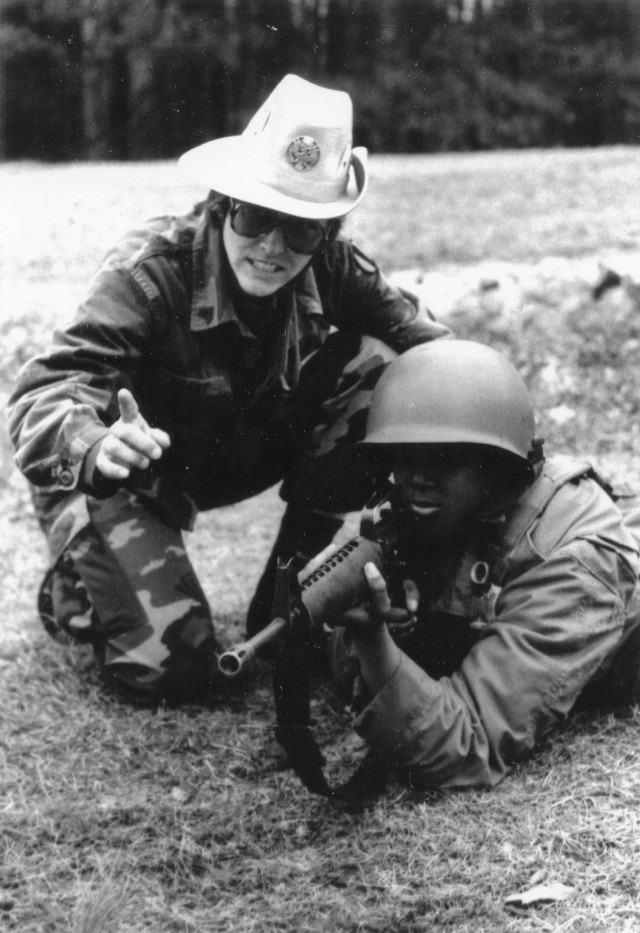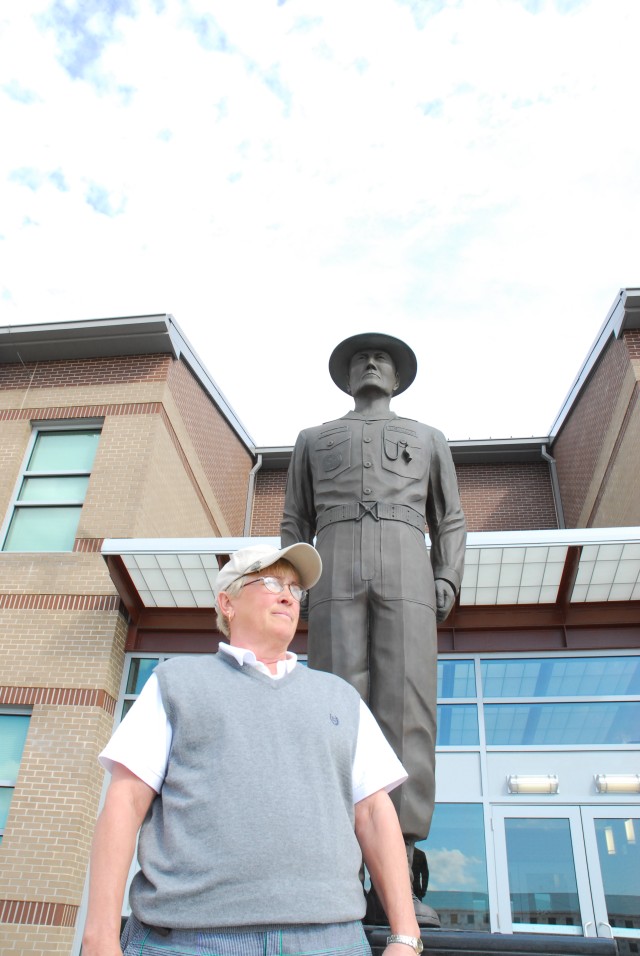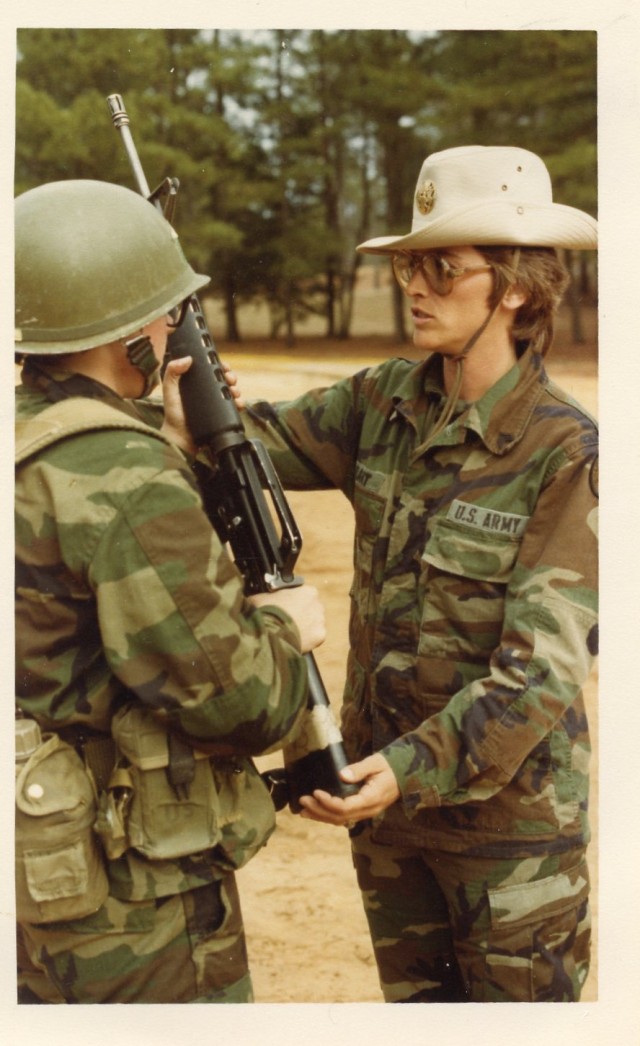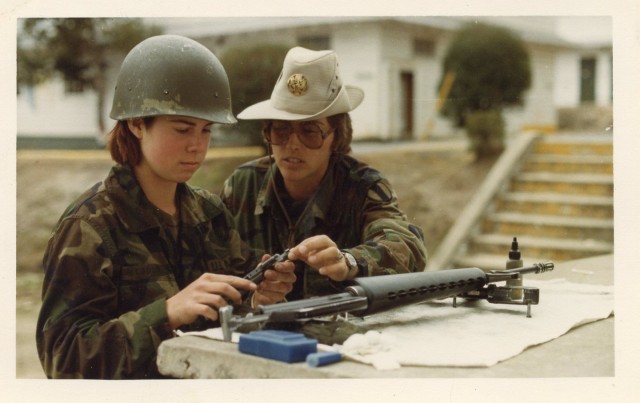FORT JACKSON, S.C. -- There was a time at Fort Jackson when female drill sergeants could not lead trainees through the Bayonet Course and perform some of the same duties as their male counterparts.
Galen Grant, a drill sergeant at Fort Jackson in the late 70s and early 80s, remembers those times. In fact she helped break down those barriers, becoming the post's first female Drill Sergeant of the Year in 1983.
"It was thought that female instructors could not instill the spirit of the bayonet, which was to kill," she said of the training exercise eliminated last year. "It was a shock and kind of a slap in the face."
Women were first allowed into the drill sergeant program in 1972 when six noncommissioned officers from the Women's Army Corps were enrolled in the drill sergeant program at Fort Jackson.
Grant, who was assigned to West Point, had 18 months of service when she enrolled in the program in 1977 and was assigned as a drill sergeant to the 2nd Infantry Brigade at Fort Jackson. She served in the 10th and 6th battalions.
"I loved getting up and going in because I never knew what the trainees were going to do next. I had a lot of fun," Grant said. "The really great thing about being a drill sergeant was every nine weeks you got to see the results of your work."
Back in those days, each company usually had one female drill sergeant. Despite the challenges, Grant excelled at her job. During her second stint as a drill sergeant at Fort Jackson she won the post's Drill Sergeant of the Year competition in 1983.
She then went to represent Fort Jackson in the Army Drill Sergeant of the Year contest.
"The best part of winning was that all female drill sergeants felt like they had won something," Grant said. "It was also a big deal in Columbia. All of the local news stations did a segment on me and the national media even covered it. Winning this recognition for women was an amazing feeling."
Jill Duffee, a training NCO and friend of Grant during her time as a drill sergeant, said it wasn't easy for women in the Army at that time.
"(Women) were treated a lot different all around back then. It was a boy's club and women were just coming into the regular army," Duffee said. "It took a lot for Grant to get where she got.
"There were not very many female drill sergeants at the time. Just a handful," she said. "But Grant was one of the best. She was very dedicated and loved her job."
Today's Drill Sergeant of the Year competitions, which are filled with hands-on events such as a road march in full battle rattle, reassembling an M16 or performing first aid, are nothing like they were in the early 80s.
"It is nothing like it is now," she said. "They took our records like PT and basic rifle marksmanship and sent us before a board of sergeants major. There was no obstacle course or any hands-on portions."
Grant, however, didn't get to where she was with a stereotypical tough-nosed drill sergeant attitude.
"I don't think you have to lead through intimidation. You can instill discipline and still have a good time doing it," she said. "Trainees want to have a sense of belonging and they want to be successful, and the drill sergeant has an obligation to help them achieve those goals."
Despite the long hours and challenging duties, Grant said she looks back fondly at her career as a drill sergeant.
"I would go home at 10:30 p.m. and go back at four in the morning," she said. "The hours were tough and you had to put your family and personal goals aside. But quite frankly I don't think there is a more important job in the Army."
But being a drill sergeant was only part of Grant's Army career. Coming into the Army with a bachelor's degree, she pursued a master's degree in clinical psychology and eventually obtained a doctorate in psychology and came back to the Army as a captain and psychologist.
She retired from the Army in 1998 and was hired as a DoD civilian psychologist, where she specialized in suicide prevention and post-traumatic stress disorder.
"I did some really cool things helping Soldiers returning from active duty downrange," she said.
Grant now volunteers her time at Fort Jackson with the 165th Infantry Brigade giving quarterly classes to drill sergeants and their spouses on how to survive drill sergeant duty.
She was also recently hired by the University of South Carolina to teach an Introduction to Psychology course for Soldiers at Fort Jackson's Warrior Transition Unit.








Social Sharing